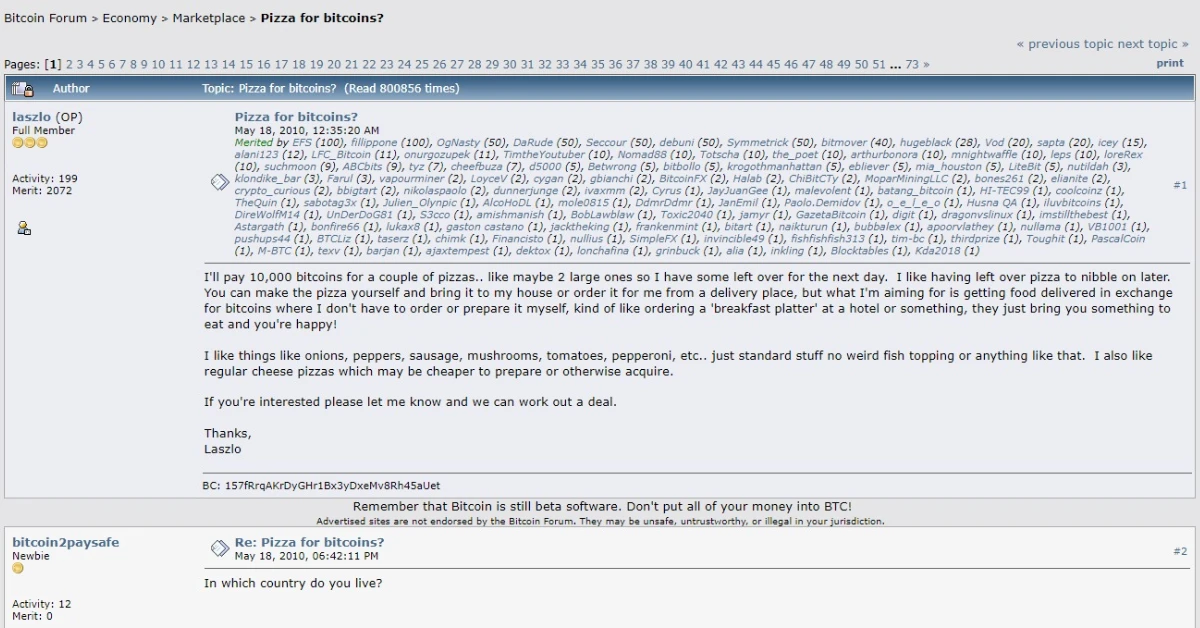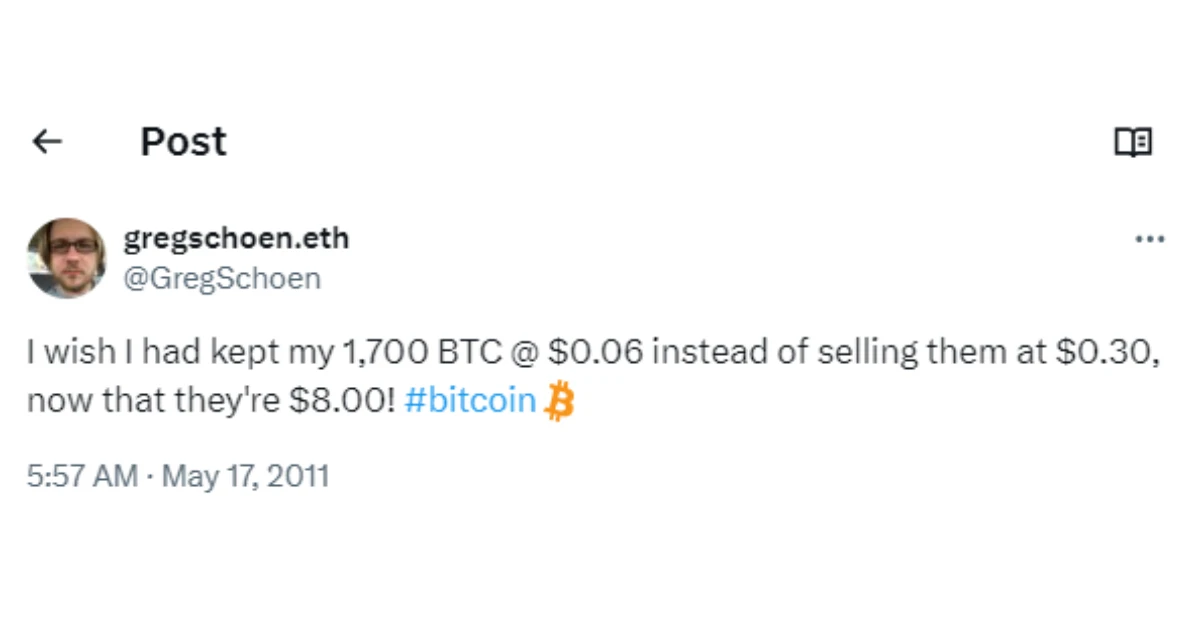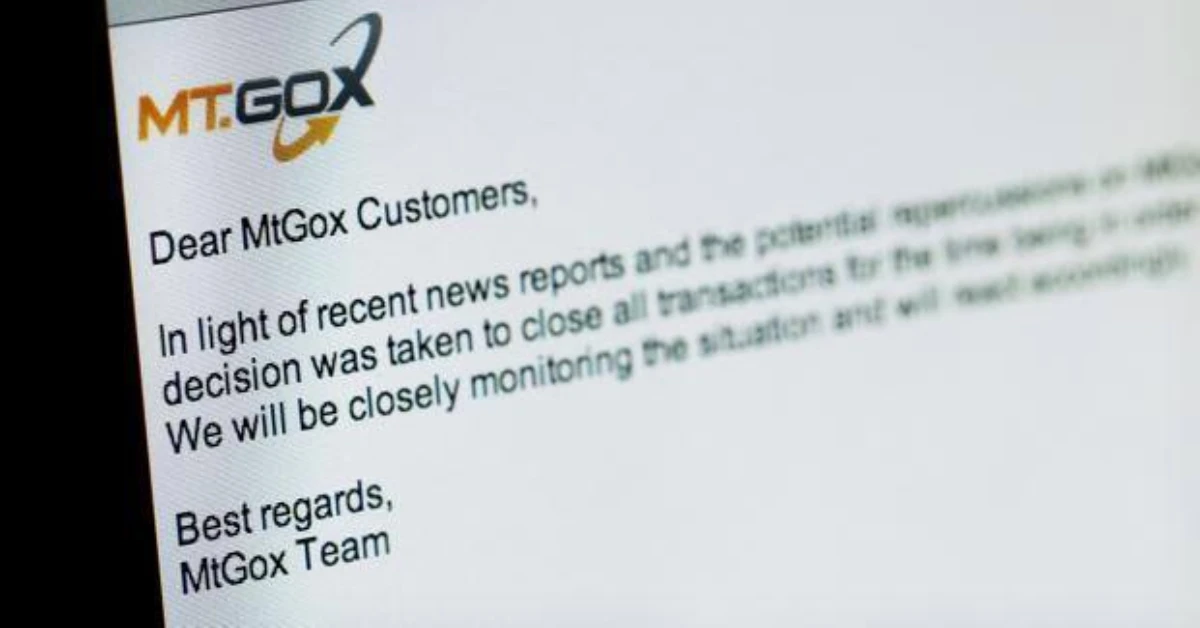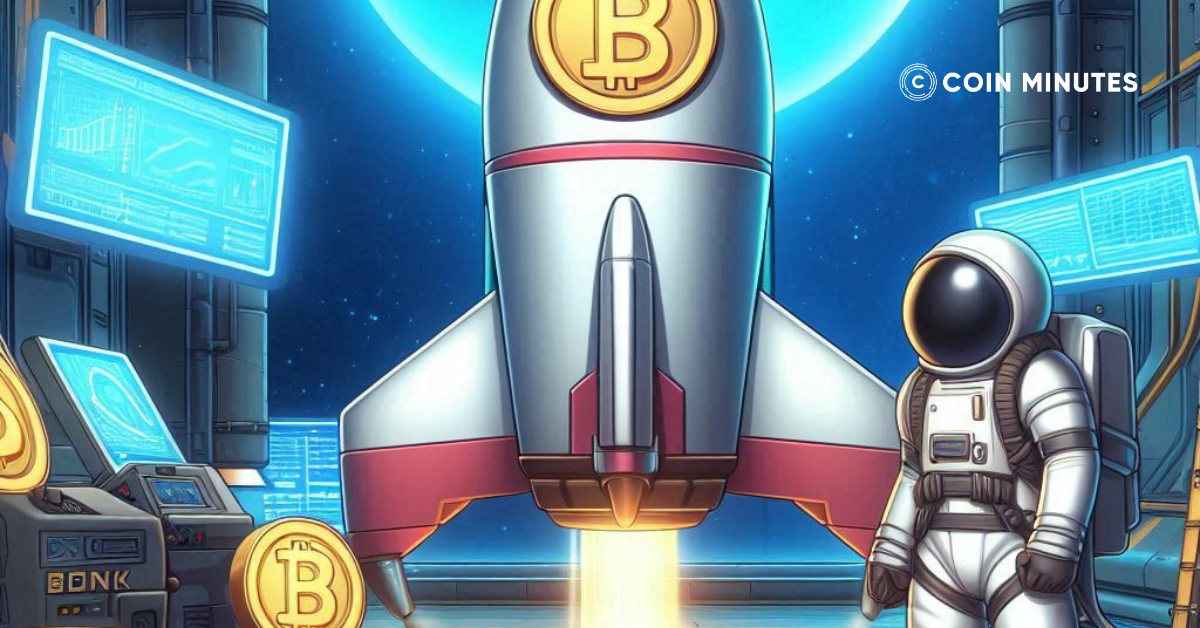Fifteen years after its humble beginnings, Bitcoin—the world’s first digital currency—has impacted global financial markets drastically. With a market capitalization exceeding $1.4 trillion, Bitcoin has become a popular alternative to traditional fiat currencies, which often depreciate over time due to inflation.
Let’s look back at Bitcoin price history to see just how wildly the market has reacted to Bitcoin!
Key Takeaways
|
Bitcoin Price History
On October 31, 2008, an individual or a group under the pseudonym Satoshi Nakamoto had an idea of a cryptocurrency that could be traded via a peer-to-peer protocol. This led to the birth of Bitcoin – the world’s largest cryptocurrency at the moment.
Bitcoin was created to address the issues associated with fiat currency, particularly centralization and being controlled by financial institutions like banks. As a non-governmental currency, Bitcoin provides better autonomy and security in financial transactions.
Fifteen years later, Bitcoin has gone from a concept on paper to becoming the 8th largest asset by market capitalization, reaching $1.4 trillion.
Early Years (2009 – 2012)
2009
On January 3, 2009, Satoshi Nakamoto mined the first block of Bitcoin, known as the “Genesis Block” (Block 0 or Block 1). This block contained the first 50 Bitcoins ever mined, marking the beginning of a new era of peer-to-peer and decentralized transactions.
Just a few days after the Bitcoin network launched, Satoshi Nakamoto sent 10 Bitcoins to Hal Finney, demonstrating that Bitcoin would soon be used as a currency. The network did not require transaction fees at this time, so the cost to send these 10 coins was zero. Back then, Bitcoin was still seen as having no value.
On October 5, 2009, Bitcoin’s price was established on a decentralized exchange for the first time. It started at 1 USD = 1,309.03 Bitcoins, or 1 Bitcoin = 0.00076 USD. However, it was more than six months before the first commercial transactions took place.
2010
The first commercial Bitcoin transaction happened when Laszlo Hanyecz paid 10,000 Bitcoins for two Papa John’s pizzas in Jacksonville, Florida.[1] At the time, Bitcoin was worth less than $0.1 per coin.

Despite the low value and small community scale, buying something with Bitcoin was seen as a significant milestone. May 22 is now celebrated in the cryptocurrency community as Bitcoin Pizza Day.
2011
In May 2011, early Bitcoin investor Greg Schoen tweeted that he regretted selling 1,700 Bitcoins for $0.30 each, as the price had risen to $8 per Bitcoin.

2012
The first Bitcoin Halving occurred on November 28, 2012. After the Halving event, BTC’s price reached $12, marking a 55,208% increase in value compared to 2011.
Growing Years (2013 – 2016)
2013
On November 27, 2013, Bitcoin’s market capitalization reached $1 billion for the first time. Just one day later, on November 28, 2013, the price of Bitcoin surpassed $1,000.
2014
Mt. Gox, once a major Bitcoin exchange based in Tokyo, filed for bankruptcy, citing a hack that resulted in the loss of 850,000 Bitcoins (around $450 million at the time). Now compensation for Mt. Gox users has yet to be completed.

By the end of 2014, the price of Bitcoin had dropped to just $200 and remained at that level for the next two years.
2016
The second Bitcoin Halving took place on July 9, 2016. After this event, Bitcoin entered a Bull Market, with its price rising from $647 to $19,664 by December 17.
Following this period of growth, the entire cryptocurrency market experienced a downturn, with Bitcoin and many other cryptocurrencies seeing significant price drops.
Become Mainstream (2017-2020)
2017
After the second halving event, the value of Bitcoin witnessed another significant surge. On November 29, the price of Bitcoin soared over $10,000 per BTC and later peaked at around $19,600.
2018
Due to government restrictions in China and concerns among investors about a potential bubble burst, the price of Bitcoin dropped from its record high back to the $10,000 mark in 2018.
2019
At the beginning of 2019, the price of Bitcoin decreased significantly, dropping to just under $4,000.
By mid-year, the Bitcoin market experienced a surge, reaching $12,900. However, this trend was short-lived, as Bitcoin fell to a low of $7,200 in December.
2020
In March 2020, the COVID-19 pandemic hit, causing Bitcoin to plummet over 50%, reaching below $4,000 in just one day.
On May 11, the third Bitcoin Halving took place. Similar to previous Halvings, the price of BTC experienced a notable increase, reaching a peak of $67,557. During this period, the total market capitalization of Bitcoin achieved the astonishing milestone of $1 trillion for the first time.
Record Highs (2021 – 2024)
2021
On April 14th, cryptocurrency exchange Coinbase went public, and Bitcoin set a new record by surpassing $65,500. However, just a day later, Bitcoin’s price dropped badly to $28,900. The sharp decline was caused by a series of negative news affecting the crypto investment community, including China tightening its regulations on digital currencies and Tesla CEO Elon Musk announcing a halt to Bitcoin purchases for Tesla vehicles, leading to a wave of selling in the digital asset market.[3][4]
From late May to early October, Bitcoin witnessed some mild recovery as the market saw some positive developments, but it failed to break the record set in April.
By November, the price of Bitcoin surged to nearly $69,000, the highest price ever recorded since its inception a decade ago. However, each time a record is set, Bitcoin fails to hold its value and ultimately drops quite significantly, sometimes losing even hundreds of dollars per hour.
2022
2022 was a tragic year for the cryptocurrency market, with many well-known companies collapsing. The crypto market began to plummet in May when the terraUSD cryptocurrency collapsed, dragging down its sister coin, LUNA, and severely impacting a series of companies associated with these two digital assets.
Then, in November, FTX—a major cryptocurrency exchange run by Sam Bankman-Fried—also declared bankruptcy after failing to salvage a liquidity crisis. The collapse of FTX continued to shake the cryptocurrency industry.[5]
Bitcoin lost about 75% of its value since reaching its all-time high. As of December 23rd, Bitcoin was trading below $17,000.
2023
In the second half of 2023, Bitcoin saw a strong upward trend. By December, each Bitcoin was priced at $42,000.
The sharp increase in the price of Bitcoin was driven by a massive influx of capital into immediate delivery ETF funds. The largest and most popular ETF funds, operated by Grayscale, Fidelity, and BlackRock, recorded a significant increase in trading volume. Additionally, the world’s largest Bitcoin-holding company, MicroStrategy, purchased an additional 3,000 units for $155 million.
Another reason for Bitcoin’s surge was the Federal Reserve’s series of interest rate cuts, prompting investors to seek investment in the cryptocurrency market.
2024
Many crypto analysts comment that this year’s Bitcoin halving event is the strangest price cycle in history. On March 14th, BTC reached $73,734 per coin – its all-time high (ATH) just about a month before the halving event. In previous cycles, the ATH typically occurred about a year after halving.
Contrary to many predictions, the price of this currency remained relatively stable when the Halving event took place, hovering around $63,700 per unit. Recently, the value of BTC has tended to remain unchanged.
As of the time of writing on May 16th, Bitcoin is trading at $66,279.

What Factors Influence Bitcoin Prices?
The price of Bitcoin depends on two main factors.
Firstly, as Bitcoin becomes scarcer, its value tends to rise.
Those with an understanding of economics know that the law of supply and demand governs everything in life. If demand exceeds supply, prices will rise. The more scarce a good is, the more expensive it becomes. Bitcoin is an asset with scarce properties.
There are several key reasons why Bitcoin is becoming increasingly scarce:
- Bitcoin has a limited supply of 21 million bitcoins. The process of creating new bitcoins will end when the total number of BTC reaches 21 million. The actual circulating supply of Bitcoin is even lower than this, as around 2 million Bitcoins are lost.
- Every four years, Bitcoin Halving—an event related to reducing the block reward for miners by half—occurs. This mechanism ensures that the amount of Bitcoin mined per block decreases over time, making BTC scarcer and more valuable.
Secondly, investor sentiment plays a crucial role.
When there is a lot of interest and demand for Bitcoin, especially with confidence in the currency, people will invest in it. The more people buy, the higher the price of Bitcoin rises, and vice versa.
Bitcoin’s history shows that, after a short period, it quickly reaches a new price peak. Despite severe downturns at times, the price usually recovers within the next year. This creates an extremely optimistic investor sentiment. Especially with the recent Bitcoin halving in 2024, investors are even more motivated to believe that Bitcoin will continue to rise in price.
The Bottom Line
From an email containing a Whitepaper to becoming the world’s largest market capitalization asset, the period from 2009 to 2024 has been a journey full of ups and downs for Bitcoin. Through this article, CoinMinutes hopes to provide readers with an overview of everything that has happened with Bitcoin price history.
Read more: Bitcoin’s history








